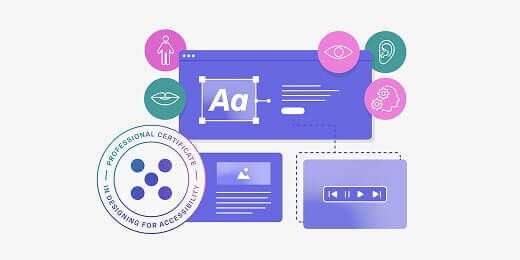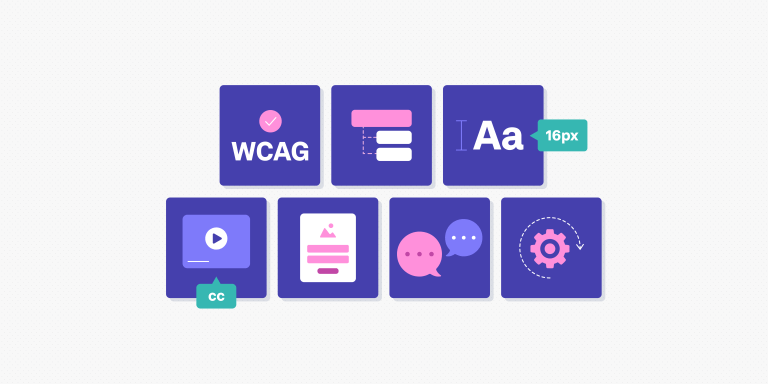The legal risks of ignoring accessibility: hefty fines, lawsuits and market exclusion
Historically, it’s been relatively easy for companies to overlook accessibility without serious legal consequences. But, with new regulations like the European Accessibility Act, that’s all changing.
The European Accessibility Act (EAA) introduces strict requirements for accessibility across digital products and services. It applies to any organisation operating in the EU or serving EU-based customers.
There are two key deadlines to be aware of:
- 28th June 2025: All new digital products and services launched beyond this date must be fully compliant with the European Accessibility Act.
- June 2030: By this date, all existing digital products and services must have reached full compliance with the EAA.
If you miss these deadlines and fail to comply, you could face serious legal consequences, which we’ll outline now.
Legal penalties and enforcement action
Regulatory authorities in each EU member state will be responsible for enforcing the EAA. If your organisation is found to be non-compliant, you could be issued with formal enforcement notices, required to make changes within a specified timeframe or subject to legal proceedings. These actions are likely to become more common as regulators increase scrutiny and enforcement efforts.
Fines, compensation claims and criminal charges
The financial penalties for non-compliance can be incredibly steep. And, in some countries, ignoring accessibility may even result in criminal charges.
In Ireland, for example, companies and individuals can be fined up to €60,000, face up to 18 months in prison or both.
In Sweden, fines for non-compliance can reach up to 10 million Swedish Kronor. That’s more than €800,000!
And it’s not only the EU that’s affected by ever-tightening legislation around accessibility. In the U.S. alone, over 4,000 accessibility-related lawsuits were filed in 2024 (Accessibility Works). That number is only expected to grow globally as compliance becomes the norm.
Businesses may also face civil compensation claims from individuals who are unable to access their services, especially in sectors like banking, e-commerce and transport.
Loss of access to EU markets
Digital products and services that don’t meet EAA requirements may also be barred from launching and/or selling within the EU. That poses a serious barrier to growth, especially for international brands.
The reputational and commercial risks of ignoring accessibility
If you’re ignoring accessibility, it’s not only the legal risks you have to worry about. The reputational and commercial stakes are just as high.
Today’s consumers (especially Gen Z and Millennials) are quick to disengage from brands that fail to deliver inclusive products and services. Many will take their business elsewhere if they feel your brand doesn’t align with modern values.
And, when you consider that one in six people globally lives with a disability and that people with disabilities control $1.9 trillion in disposable income, inaccessible design could literally be costing you millions.
The risks of non-compliance are simply too high to ignore. If you’re not already taking action, now is the time. And it starts with design.
Accessibility begins with design: start prioritising it now
67% of accessibility issues can be avoided at the design stage, yet too many companies still treat accessibility as an afterthought.
If you want to create accessible products and avoid legal action, you must embed accessibility best practices into the product design process. That way, you can address potential barriers before they’re even built. This approach saves time, reduces technical debt and crucially minimises legal risk.
We share concrete steps you can take to prioritise accessibility and ensure compliance in our follow-on article: How to meet accessibility standards and avoid legal risk: a practical guide for CXOs.
Next steps: how to stay compliant and avoid legal action
If you’re still treating accessibility as optional, you run the risk of hefty fines and even legal action. At the same time, you’re excluding a huge segment of the population and missing out on significant revenue.
So here’s what to do next:
- Start by understanding what’s legally required of your organisation. If applicable, make sure you’re familiar with the European Accessibility Act (EAA) and the Web Content Accessibility Guidelines (WCAG).
- Audit your existing product(s)/service(s) for accessibility gaps and take proactive steps to address them. Refer to our UX design accessibility checklist as a starting point.
- Equip your design and product teams with the skills, knowledge and confidence to prioritise and advocate for accessibility throughout the customer experience. Check out our Professional Certificate in Designing for Accessibility for structured, industry-compliant training.
The sooner you take action, the sooner you can reach full compliance, mitigate unnecessary legal risks and create better products for everyone.
Ensure full legal compliance with The UX Design Institute
We’ve created the Professional Certificate in Designing for Accessibility specifically for product, UX and development teams to give them the practical skills they need to build accessible digital experiences.
Crucially, the course goes beyond theory, offering a hands-on curriculum that’s grounded in real-world scenarios and practical exercises that fully aligns with the latest WCAG and European Accessibility Act (EAA) standards.
It’s designed not only to meet compliance requirements but to help teams integrate accessibility into their everyday workflows and decision-making.
Whether you’re just starting to prioritise accessibility or looking to scale knowledge across multiple teams, our training supports long-term capability-building so you can create more inclusive products and stay ahead of evolving expectations.
The course is delivered online and flexibly paced, making it easy for teams to fit learning around their schedules and day-to-day work without compromising impact.
UX Design Institute CEO Colman Walsh introduces the new course in more detail here, and you can learn more about the curriculum via the course homepage.
For more tools and resources, continue with the following:
- Making accessibility real: practical insights from Skyscanner’s Head of Accessibility, Heather Hepburn
- How to optimise your website for user experience accessibility
- News alert: businesses at risk of legal claims as EU accessibility deadline looms






